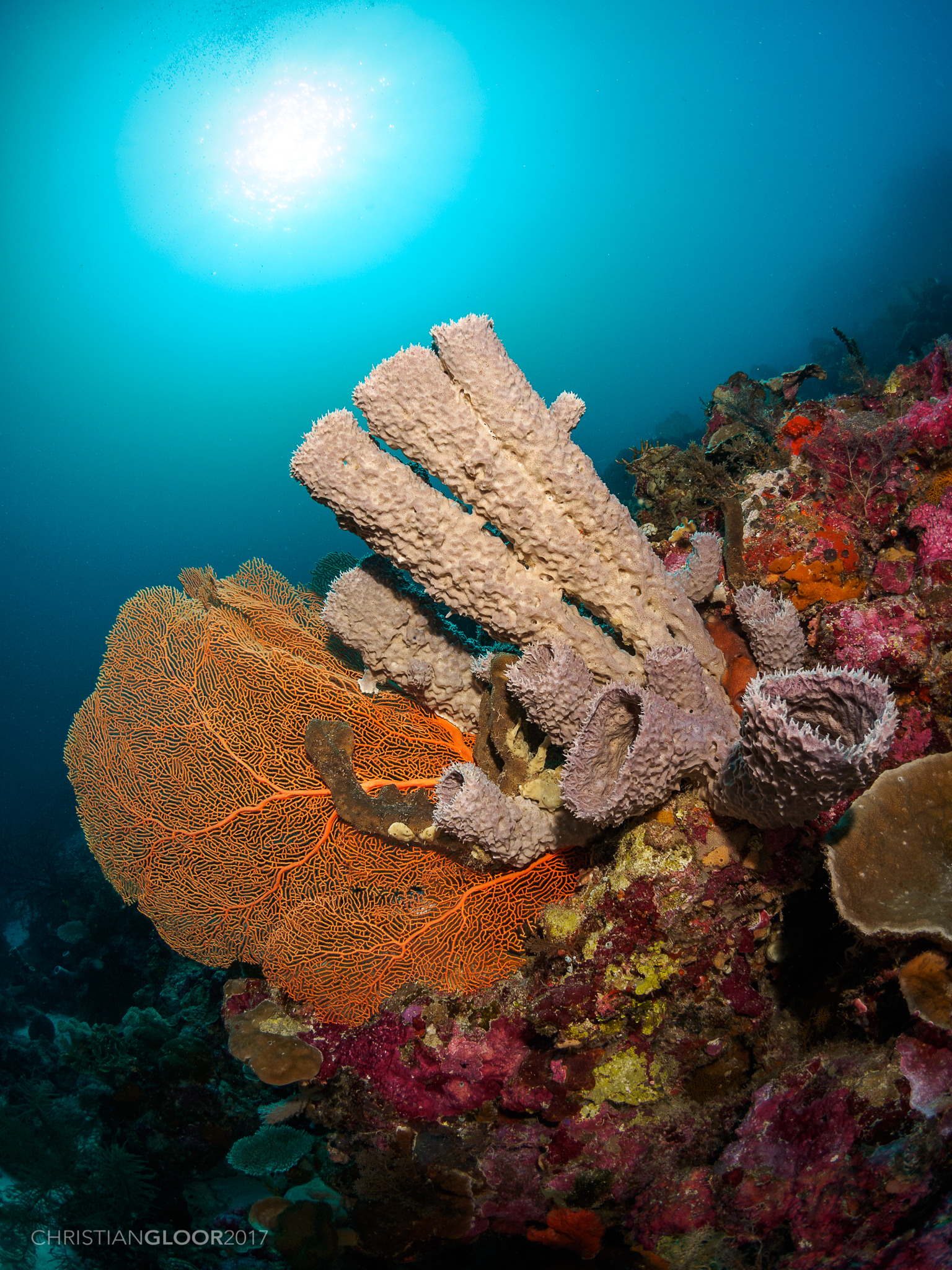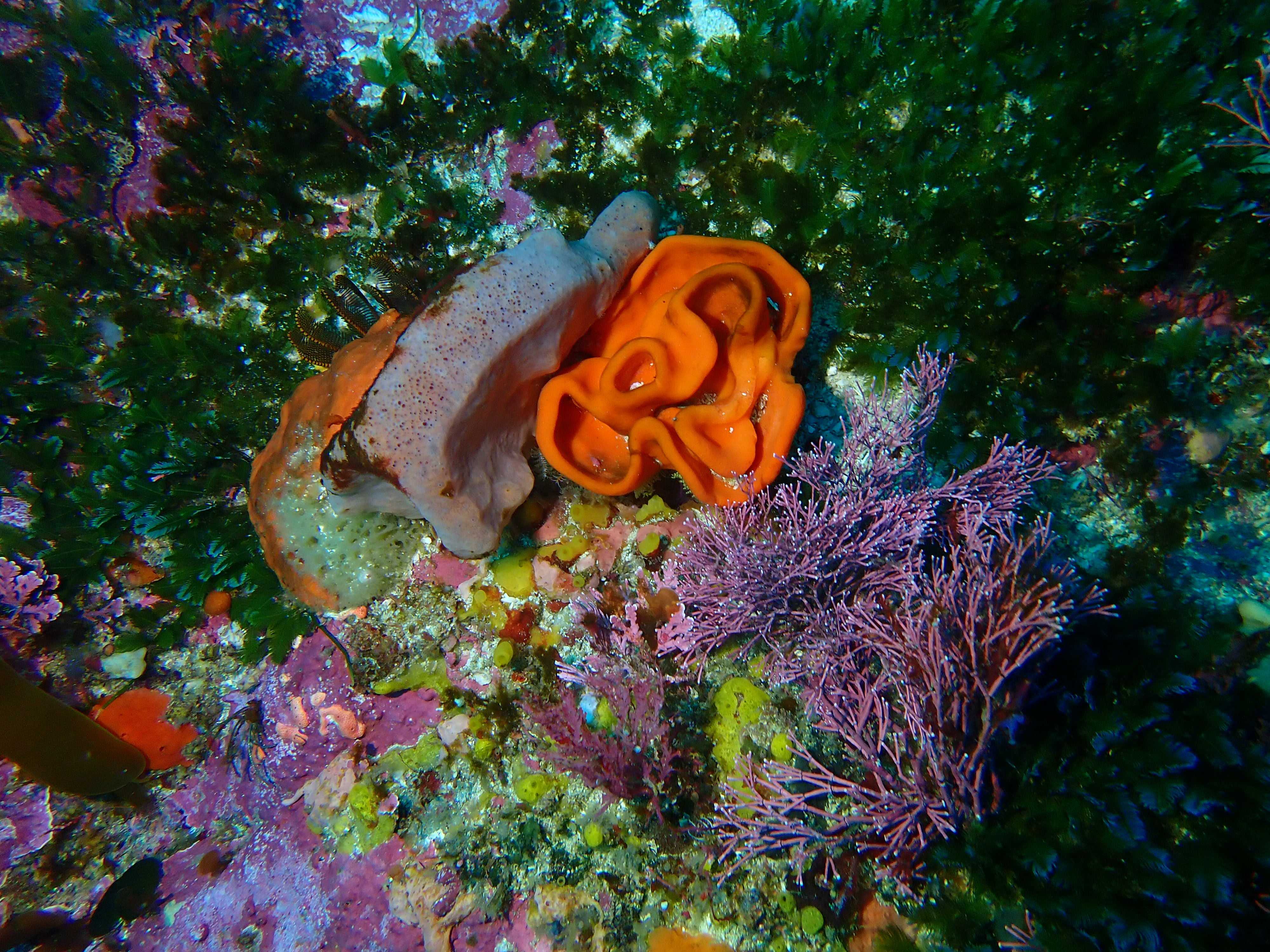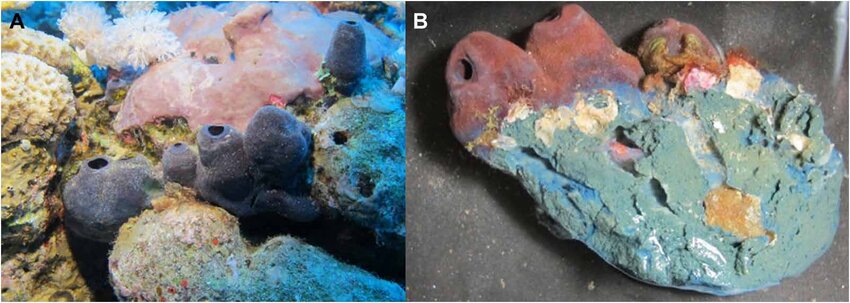
Credit: Christian Gloor, CC BY 2.0, via Wikimedia Commons
Background
Synopsis: Sponges play an essential role in aquatic ecosystems by filtering water and consuming bacteria. But they also benefit humans. Some sponges are useful in treating diseases like cancer and chickenpox, while others can detoxify heavy metals, offering hope for water cleanup. Ongoing research may unlock even more environmental and medical benefits of these ancient organisms.
- Sponges are often overlooked but play an important role in aquatic environments.
- There are 8,550 different species of sponges, and the oldest sponge fossil found is 600 million years old.
- They are aquatic invertebrates, sometimes resembling coral, but are quite different.
- One difference is that corals require saltwater, while sponges can be found in both fresh- and saltwater.
- Their strong skeletal structure allows sponges to withstand the massive amounts of water that flow through them daily.
- Sponges can adjust their skeletal systems to suit their environments. They can attach to rocky surfaces, artificial structures or even floating debris, and are occasionally found free-floating.
- They are especially important for reefs, as they filter and clean the water while collecting bacteria and other dissolved organic matter for food.
- More information on sponges can be found in a previous episode.

Vibrant sea sponges photographed at the 12 Mile Bank, off the coast of South Africa.
Credit: Peter Southwood, CC BY-SA 4.0, via Wikimedia Commons
- But sponges do more than just help marine environments. They have introduced many new biochemical compounds to science.
- In 1945, a new species of sponge was collected in the Florida Keys.
- Scientists placed the sponge into acetone to extract sterols, a newly discovered type of fat compound, but the sponge had an unexpected reaction.
- It released a crystalline substance, later identified as a new compound, a nucleoside now called spongothymidine.
- A nucleoside is one of the building blocks of DNA and RNA. It’s made of a sugar and a base and helps make the instructions for life.
- Originally thought to be a defense mechanism, spongothymidine required years of further research to fully understand.
- Sponges use nucleosides, like spongothymidine, to combat fast-moving infections.
- These molecules are structurally similar to thymidine, a building block of DNA.
- Viruses mistakenly latch onto these mimics to replicate, but since these nucleosides can’t stack like real DNA, the viral spread is halted.
- Scientists realized this process could be used in medicine.
- In 1969, the first sponge-based drug, Cytarabine, was released. It blocks DNA replication in lymphoma and leukemia tumors and remains a key component of cancer treatment today.
- Other drugs followed, including Acyclovir (used for herpes, chickenpox, and shingles) and AZT, one of the first HIV treatments.
- The main challenge with sponge-based drugs is limited quantity. The compounds must be harvested from the ocean or sponges that are synthesized in labs, which can be expensive and time consuming.
- On average, it takes about 15 years from discovery to commercialization. But many more sponge-inspired treatments are in development for antibacterial, antifungal, antimalarial and anti-inflammatory properties.
- Sponges use nucleosides, like spongothymidine, to combat fast-moving infections.
- Biochemicals from sponges can do more than fight disease—they may also help clean our environment.
- Molybdenum, which does not occur naturally in its pure metallic form, is found in compounds like molybdenite (MoS2) and is an important heavy metal used as an alloying agent in steel, in heating elements and missile parts, and in lubricants, catalysts, pigments and electrodes.
- While humans and other animals need trace amounts of the metal molybdenum to process toxins and drugs, too much can be harmful. A rare sponge, Theonella conica, was found to contain dangerously high levels of molybdenum, enough to be toxic to most life.
- Specimens from the Gulf of Eilat had the highest molybdenum concentrations ever recorded in any organism: 46,793 micrograms per gram of dry weight.
- This raised a question: How the sponge stockpile so much of this element without side effects?
- It turns out that 40% of T. conica’s body is made up of symbionts, organisms living in a mutually beneficial relationship.
- One key symbiont, a bacteria called Entotheonella, acts as a detoxifying agent. It collects molybdenum and transforms it into harmless compounds.
- A related sponge, T. swinhoei, uses the same bacteria to detoxify arsenic and barium.
- Scientists aren’t entirely sure why these sponges store such large amounts of toxic elements. It may be a survival strategy, protecting the sponge from predation, microbial infection or ecological competition by making it chemically inhospitable to others.

Theonella conica from the Red Sea, before and after sampling, showing the outer maroon and inner blue colors of the sponge.
Credit: Shani Shoham, Ray Keren, Adi Lavy, Iryna Polishchuk, B. Pokroy, Micha Ilan, via ResearchGate
- This discovery suggests a new way sponges may help humans and marine environments.
- Research is ongoing to explore how these sponges—or more specifically, the bacteria they host—could be used to remove pollution from water.
- Focusing on Entotheonella, the symbiotic bacteria responsible for detoxifying heavy metals, may be the most promising path forward.
- Removing harmful metals like molybdenum or arsenic from contaminated water could benefit over 200,000 people worldwide affected by such pollution.
- Since rivers are the primary sources of molybdenum in the ocean and the element often accumulates in sediment, Entotheonella could potentially be applied directly in targeted areas to transform these pollutants into safer compounds—without needing to rely on the entire sponge.
- From fighting disease to filtering toxic metals, sea sponges are more than simple sea creatures; they are powerful allies in medicine and environmental cleanup. As research continues, these ancient organisms may help solve some of today’s biggest health and pollution challenges.
Episode script
You may remember from a prior episode that some sponges can creep, very slowly, across the ocean floor. But most are stationary, or sessile, which make them seem less interesting.
However, we continue to learn just how fascinating, and valuable, sponges are.
There are 8,550 species, in all colors, shapes and sizes, in all depths of salt- and fresh water. They survive by filtering water through their tissues to consume bacteria.
And this is key to their environmental benefits. They clean the water around reefs where they live; some even filter out dangerous elements.
A few species sequester high levels of arsenic, barium and molybdenum enough to be toxic to other lifeforms.
This has given ecologists the idea to grow colonies of sponges at the mouths of polluted rivers, to make the water safe.
Sponges manage these toxins with symbiotic bacteria that bond to the elements and make them inert. Medical researchers are investigating ways to do the same in humans.
Many other useful medical compounds have come from sponges.
They produce spongothymadine, which mimics a building block of DNA, to trap viruses.
Biotech companies have used spongothymadine to produce drugs for HIV and cancer, with many more sponge-inspired treatments in development—for antibacterial, antifungal and anti-inflammatory medications.
An amazing array of benefits from the simple, super sponge.

